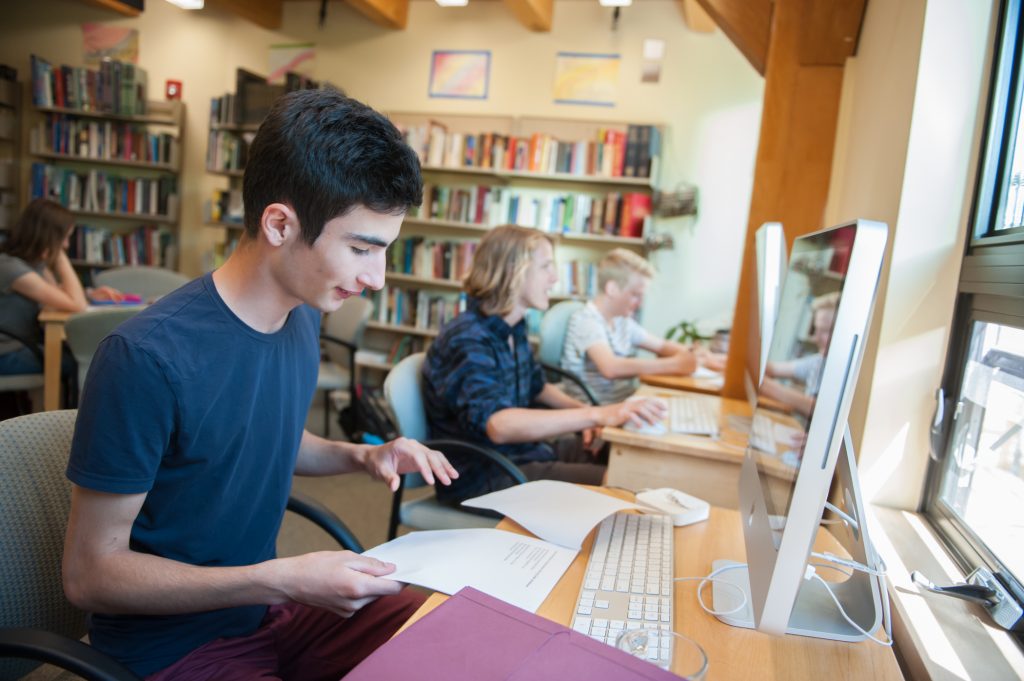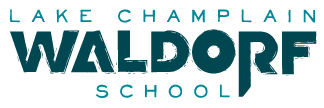
How does a school that consciously limits technology teach its students to use the Internet? Our
The three-year curriculum, which is rapidly being adopted by schools across the country, solves the question middle school parents most urgently ask: how do we navigate the digital world? The curriculum also positions the school as a leader in teaching students the social and behavioral skills to use technology in a healthy, productive way.
“Our job as teachers is to meet the children and the families of today,” Hopkinson said. “We wanted to address what students and parents are dealing with on a day-to-day basis.”
On April 11 from 7-8:30 pm, parents are invited to learn practical and positive strategies to support their students’ digital lives at our High School Campus at 122 Bostwick Road in Shelburne, VT. At Raising Kids in a Digital World, attendees will discuss ways to build safe and healthy relationships with technology and tackle the tough questions parents face.
Cyber Civics was first made available four years ago and now is taught in 1,000 schools nationwide. Only one other school in Vermont has adopted the curriculum; just 25 in New England use it. “Every year the number of schools that sign up doubles,” said founder Diana Graber, who is also the author of “Raising Humans in a Digital World.”
Our students receive 50 minutes of Cyber Civics weekly for three years–the most comprehensive curriculum available on a subject that pervades nearly every aspect of our children’s lives: the Internet. “Our school is really on the forefront of confronting the issue of what to do with media,” said Tucker Pierson, a parent of three children, aged 10, 12, and 14.
“It feels like a fire running wild,” said Amy Brennan Keech, a parent of three children, of the impact of the Internet on children. “Parents feel blindsided by the way this technology undermines their authority and their relationship with their kids. We are in a unique position at our school to say, ‘Here is a different way.’”
The first year of the Cyber Civics curriculum covers Digital Citizenship, starting with a look at how new technologies disrupt society, going back to 1300 BC when the newly created writing stylus invoked fear: surely, this new technology would ruin people’s ability to remember. The focus of the curriculum is social and behavioral skills.
The second year teaches Information Literacy: how to find, retrieve, analyze and use online information. The emphasis is on hands-on projects, problem solving, and role-play.
The focus in the third year is Media Literacy. How do we evaluate the assault of media messages we encounter? How do we act as positive and productive digital citizens, and as digital leaders who will use digital tools for good? Students use their new digital skills in a final project culminating in a presentation.
Waldorf philosophy is known for its in-depth and integrated approach to education. Lessons are taught thoughtfully over months and subjects are integrated to deepen learning and student engagement. Adopting a cutting-edge curriculum is typical.
“Waldorf education changes with every generation,” said Abigail Diehl-Noble, a middle and high school teacher. “We have the freedom to take a look at our classrooms and adapt them to the needs of the children today. I’m proud that our school has taken on this Cyber Civics curriculum.”

